-
 Bitcoin
Bitcoin $108,165.4587
0.78% -
 Ethereum
Ethereum $2,456.3517
1.15% -
 Tether USDt
Tether USDt $1.0003
0.00% -
 XRP
XRP $2.1934
0.05% -
 BNB
BNB $650.0935
0.52% -
 Solana
Solana $151.3905
2.69% -
 USDC
USDC $0.9998
0.00% -
 TRON
TRON $0.2751
-0.32% -
 Dogecoin
Dogecoin $0.1640
0.87% -
 Cardano
Cardano $0.5631
0.57% -
 Hyperliquid
Hyperliquid $38.7115
4.69% -
 Bitcoin Cash
Bitcoin Cash $493.1868
-0.39% -
 Sui
Sui $2.8217
3.61% -
 Chainlink
Chainlink $13.3994
2.08% -
 UNUS SED LEO
UNUS SED LEO $9.1632
0.94% -
 Avalanche
Avalanche $18.0318
1.97% -
 Stellar
Stellar $0.2388
0.35% -
 Toncoin
Toncoin $2.8763
1.41% -
 Shiba Inu
Shiba Inu $0.0...01160
1.59% -
 Litecoin
Litecoin $86.6393
1.29% -
 Hedera
Hedera $0.1485
0.16% -
 Monero
Monero $315.7948
1.56% -
 Polkadot
Polkadot $3.4240
1.88% -
 Bitget Token
Bitget Token $4.6314
-0.44% -
 Dai
Dai $0.9998
-0.01% -
 Ethena USDe
Ethena USDe $1.0002
-0.01% -
 Uniswap
Uniswap $7.2110
2.59% -
 Aave
Aave $270.6087
6.07% -
 Pi
Pi $0.5350
0.52% -
 Pepe
Pepe $0.0...09545
1.26%
How to calculate profit and loss in leverage trading? How is Binance's liquidation mechanism triggered?
Leverage trading amplifies profits and losses; understanding calculations and Binance's liquidation process is key to managing risks effectively.
May 07, 2025 at 09:00 pm
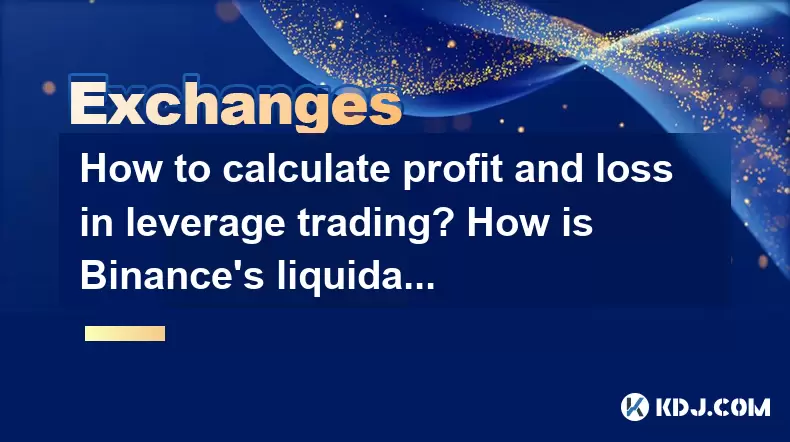
Leverage trading in the cryptocurrency market offers traders the opportunity to amplify their potential profits by borrowing funds to increase their trading position. However, it also comes with an increased risk of significant losses. Understanding how to calculate profit and loss in leverage trading, as well as how Binance's liquidation mechanism works, is crucial for any trader looking to navigate this high-stakes environment effectively.
Understanding Leverage Trading
Leverage trading allows traders to borrow money to invest in a larger position than they could with their own capital alone. For example, with a 10x leverage, a trader can control a position worth 10 times their initial investment. While this can lead to substantial gains, it can also result in significant losses if the market moves against the trader's position.
Calculating Profit in Leverage Trading
To calculate profit in leverage trading, you need to consider the entry price, exit price, and the amount of leverage used. The formula to calculate profit is as follows:
[ \text{Profit} = (\text{Exit Price} - \text{Entry Price}) \times \text{Quantity} \times \text{Leverage} ]
Let's break this down with an example. Suppose you buy 1 Bitcoin (BTC) at $30,000 with 10x leverage, meaning you control a position worth $300,000. If the price of BTC rises to $31,000 and you decide to exit your position, your profit calculation would be:
[ \text{Profit} = (31,000 - 30,000) \times 1 \times 10 = 1,000 \text{ USD} ]
In this scenario, your profit is $1,000, which is 10 times the profit you would have made without leverage.
Calculating Loss in Leverage Trading
Calculating loss in leverage trading follows a similar principle but in the opposite direction. The formula for loss is:
[ \text{Loss} = (\text{Entry Price} - \text{Exit Price}) \times \text{Quantity} \times \text{Leverage} ]
Using the same example, if the price of BTC drops to $29,000 and you exit your position, your loss calculation would be:
[ \text{Loss} = (30,000 - 29,000) \times 1 \times 10 = 1,000 \text{ USD} ]
Here, your loss is $1,000, which is 10 times the loss you would have incurred without leverage.
Factors Affecting Profit and Loss
Several factors can affect the profit and loss in leverage trading:
- Market Volatility: High volatility can lead to larger price swings, which can amplify both profits and losses.
- Leverage Level: Higher leverage increases the potential for both gains and losses.
- Position Size: Larger positions increase the exposure to market movements.
- Trading Fees: Both entry and exit fees can impact the net profit or loss.
Binance's Liquidation Mechanism
Binance, one of the largest cryptocurrency exchanges, employs a liquidation mechanism to protect both the trader and the platform from significant losses. When a trader's position moves against them, and their margin balance falls below a certain threshold, the exchange will automatically liquidate the position to prevent further losses.
How Binance's Liquidation Mechanism is Triggered
Binance's liquidation mechanism is triggered when the trader's margin balance falls below the maintenance margin level. The maintenance margin is a percentage of the total position value that must be maintained to keep the position open. If the margin balance falls below this level, the position is at risk of liquidation.
Here are the steps involved in the liquidation process on Binance:
- Monitoring Margin Balance: Binance continuously monitors the margin balance of each open position.
- Maintenance Margin Check: If the margin balance falls below the maintenance margin, a margin call is issued.
- Liquidation Price Calculation: Binance calculates the liquidation price, which is the price at which the position will be liquidated if the margin balance continues to decline.
- Automatic Liquidation: If the market price reaches the liquidation price, Binance automatically closes the position to prevent further losses.
Example of Binance's Liquidation Mechanism
Consider a trader who opens a long position on BTC with 10x leverage at $30,000. The initial margin required is 10% of the position value, which is $3,000. The maintenance margin is set at 5% of the position value, or $1,500.
If the price of BTC drops to $28,500, the position value becomes $285,000, and the margin balance is now $1,500 (5% of $30,000). At this point, the position is at the maintenance margin level. If the price continues to drop to $27,000, the margin balance will fall below the maintenance margin, and the position will be liquidated.
Importance of Risk Management
Effective risk management is crucial in leverage trading to avoid significant losses and potential liquidation. Traders should:
- Set Stop-Loss Orders: These orders automatically close a position when the price reaches a predetermined level, limiting potential losses.
- Monitor Positions Closely: Regularly check the margin balance and market conditions to stay ahead of potential liquidation.
- Use Lower Leverage: Starting with lower leverage can help manage risk, especially for new traders.
Tools and Resources for Calculating Profit and Loss
Several tools and resources are available to help traders calculate profit and loss in leverage trading:
- Trading Platforms: Most trading platforms, including Binance, provide calculators and real-time data to help traders monitor their positions.
- Spreadsheets: Custom spreadsheets can be created to track and calculate profit and loss based on different scenarios.
- Online Calculators: Various websites offer online calculators specifically designed for leverage trading.
Practical Steps to Calculate Profit and Loss
To calculate profit and loss in leverage trading, follow these steps:
- Determine Entry and Exit Prices: Record the price at which you enter and exit the position.
- Calculate the Difference: Subtract the entry price from the exit price to find the price change.
- Multiply by Quantity and Leverage: Multiply the price change by the quantity of the asset and the leverage used to find the profit or loss.
- Account for Fees: Subtract any trading fees from the calculated profit or add them to the calculated loss.
Frequently Asked Questions
Q: How does leverage affect my potential returns and risks?
A: Leverage amplifies both potential returns and risks. With higher leverage, small price movements can result in significant profits or losses. For example, with 10x leverage, a 1% price increase can lead to a 10% profit, but a 1% price decrease can lead to a 10% loss.
Q: Can I avoid liquidation by adding more funds to my margin account?
A: Yes, if you receive a margin call, you can avoid liquidation by adding more funds to your margin account to bring the margin balance above the maintenance margin level. However, this should be done quickly as market conditions can change rapidly.
Q: What happens to my position if it is liquidated?
A: If your position is liquidated, Binance will automatically close the position at the best available market price. Any remaining margin balance after covering the losses will be returned to your account. However, if the losses exceed the margin balance, you may owe the exchange additional funds.
Q: Are there any strategies to minimize the risk of liquidation?
A: Yes, several strategies can help minimize the risk of liquidation, including using lower leverage, setting stop-loss orders, diversifying your portfolio, and regularly monitoring your positions. Additionally, understanding the market and having a solid trading plan can help manage risks effectively.
Disclaimer:info@kdj.com
The information provided is not trading advice. kdj.com does not assume any responsibility for any investments made based on the information provided in this article. Cryptocurrencies are highly volatile and it is highly recommended that you invest with caution after thorough research!
If you believe that the content used on this website infringes your copyright, please contact us immediately (info@kdj.com) and we will delete it promptly.
- Do Kwon, Terra (LUNA), Developments: What's the Latest?
- 2025-06-30 04:30:12
- MAGACOIN vs. Dogecoin: Riding the Crypto Growth Wave in 2025
- 2025-06-30 04:30:12
- Dogecoin, Ruvi AI, and Gains: A New Era of Crypto Opportunities?
- 2025-06-30 04:50:12
- Crypto Market Weekly Winners: PENGU and SEI Shine Amidst Volatility
- 2025-06-30 04:57:13
- Altcoin Season, Bitcoin Dominance, and the 2025 Outlook: Will XRP and Cardano Lead the Charge?
- 2025-06-30 04:36:44
- Token Unlocks and Altcoins: Navigating the Massive Release Landscape
- 2025-06-30 04:40:13
Related knowledge
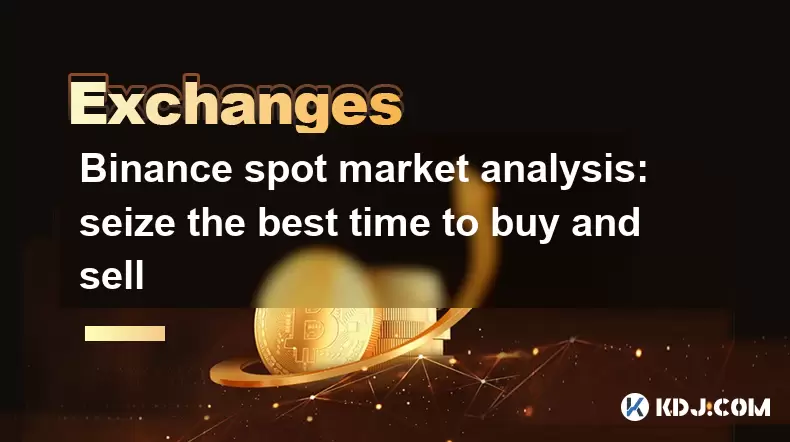
Binance spot market analysis: seize the best time to buy and sell
Jun 19,2025 at 04:56pm
Understanding the Binance Spot MarketThe Binance spot market is one of the most popular platforms for cryptocurrency trading globally. It allows users to trade digital assets at current market prices, making it essential for traders aiming to buy low and sell high. Unlike futures or margin trading, spot trading involves direct ownership of the asset aft...
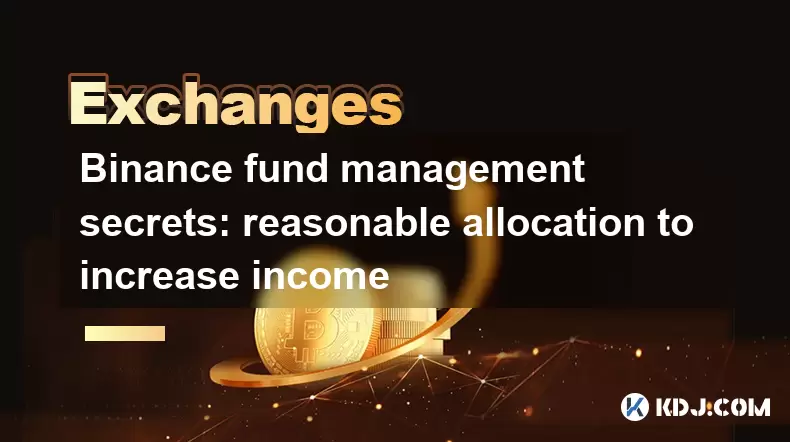
Binance fund management secrets: reasonable allocation to increase income
Jun 22,2025 at 02:29pm
Understanding Binance Fund ManagementBinance fund management involves strategic allocation of your cryptocurrency assets to optimize returns while managing risk. The key to successful fund management lies in understanding how different investment options on the Binance platform can be utilized to create a diversified portfolio. This includes spot tradin...

Binance trading pair selection skills: find the best buying and selling combination
Jun 23,2025 at 02:49am
Understanding the Basics of Trading Pairs on BinanceBefore diving into trading pair selection skills, it's essential to understand what a trading pair is. On Binance, a trading pair refers to two cryptocurrencies that can be traded against each other. For example, BTC/USDT means Bitcoin is being traded against Tether. Each trading pair has its own liqui...

Binance new coin mining strategy: participate in Launchpool to earn income
Jun 23,2025 at 11:56am
What is Binance Launchpool and how does it work?Binance Launchpool is a feature introduced by the world’s largest cryptocurrency exchange, Binance, to allow users to earn new tokens through staking. This platform enables users to stake their existing cryptocurrencies (such as BNB, BUSD, or other supported assets) in exchange for newly launched tokens. T...
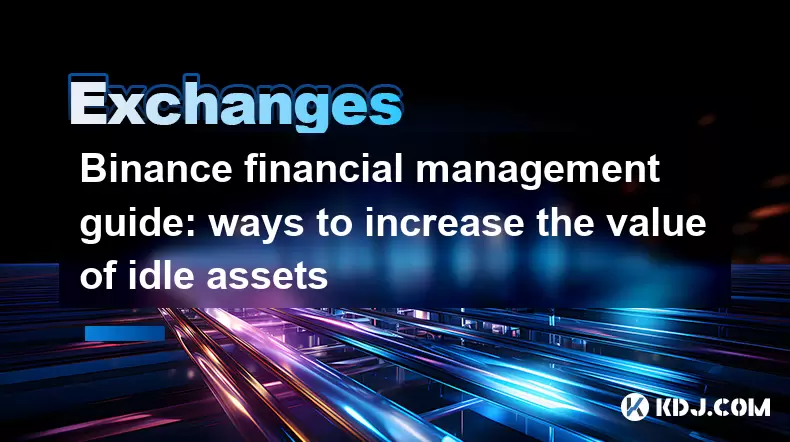
Binance financial management guide: ways to increase the value of idle assets
Jun 19,2025 at 11:22pm
Understanding Idle Assets in the Cryptocurrency SpaceIn the fast-paced world of cryptocurrency, idle assets refer to digital currencies that are not actively being used for trading, staking, or yield farming. Holding these funds in a wallet without utilizing them means missing out on potential growth opportunities. Binance, as one of the leading platfor...
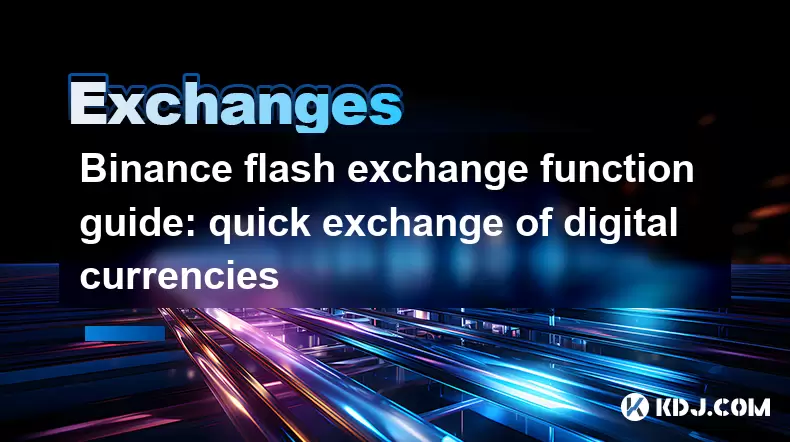
Binance flash exchange function guide: quick exchange of digital currencies
Jun 23,2025 at 12:29pm
What is the Binance Flash Exchange Function?The Binance Flash Exchange function is a powerful tool designed to allow users to instantly swap between supported cryptocurrencies without the need for placing traditional buy/sell orders. This feature simplifies the trading process by offering a direct exchange mechanism, eliminating the requirement to conve...

Binance spot market analysis: seize the best time to buy and sell
Jun 19,2025 at 04:56pm
Understanding the Binance Spot MarketThe Binance spot market is one of the most popular platforms for cryptocurrency trading globally. It allows users to trade digital assets at current market prices, making it essential for traders aiming to buy low and sell high. Unlike futures or margin trading, spot trading involves direct ownership of the asset aft...

Binance fund management secrets: reasonable allocation to increase income
Jun 22,2025 at 02:29pm
Understanding Binance Fund ManagementBinance fund management involves strategic allocation of your cryptocurrency assets to optimize returns while managing risk. The key to successful fund management lies in understanding how different investment options on the Binance platform can be utilized to create a diversified portfolio. This includes spot tradin...

Binance trading pair selection skills: find the best buying and selling combination
Jun 23,2025 at 02:49am
Understanding the Basics of Trading Pairs on BinanceBefore diving into trading pair selection skills, it's essential to understand what a trading pair is. On Binance, a trading pair refers to two cryptocurrencies that can be traded against each other. For example, BTC/USDT means Bitcoin is being traded against Tether. Each trading pair has its own liqui...

Binance new coin mining strategy: participate in Launchpool to earn income
Jun 23,2025 at 11:56am
What is Binance Launchpool and how does it work?Binance Launchpool is a feature introduced by the world’s largest cryptocurrency exchange, Binance, to allow users to earn new tokens through staking. This platform enables users to stake their existing cryptocurrencies (such as BNB, BUSD, or other supported assets) in exchange for newly launched tokens. T...

Binance financial management guide: ways to increase the value of idle assets
Jun 19,2025 at 11:22pm
Understanding Idle Assets in the Cryptocurrency SpaceIn the fast-paced world of cryptocurrency, idle assets refer to digital currencies that are not actively being used for trading, staking, or yield farming. Holding these funds in a wallet without utilizing them means missing out on potential growth opportunities. Binance, as one of the leading platfor...

Binance flash exchange function guide: quick exchange of digital currencies
Jun 23,2025 at 12:29pm
What is the Binance Flash Exchange Function?The Binance Flash Exchange function is a powerful tool designed to allow users to instantly swap between supported cryptocurrencies without the need for placing traditional buy/sell orders. This feature simplifies the trading process by offering a direct exchange mechanism, eliminating the requirement to conve...
See all articles

























































































